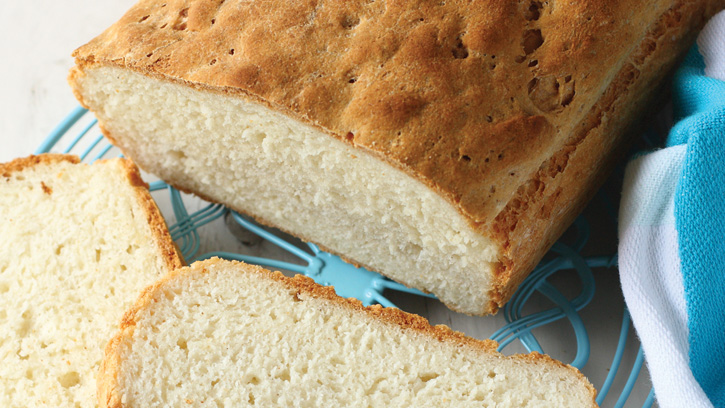Gluten-Free Bread Without Bitterness
Science Forward | RESEARCH
Gluten-free bread products continue to find favor with consumers, including those who do not have a gluten sensitivity or aren’t celiac positive. Yet making bread without gluten but with the favored sensory properties, nutritional benefits, and the structure that consumers prefer is difficult to do.
“When it comes to gluten-free product development, often it’s a compromise where you’re losing nutritional value,” says Ryan Ardoin, a research food technologist at the Southern Regional Research Center of the U.S. Department of Agriculture’s Agricultural Research Service (ARS) in New Orleans. Also, the fiber often used to replace wheat flours can make the bread harder, cause it to stale faster, and create a texture that’s not on par with traditional wheat-based products.
Sorghum bran is one wheat flour replacement option. A byproduct of sorghum milling, the bran contains nutritional benefits, including antioxidants like flavonoids and phenolic acids. Also, as a byproduct, it’s inexpensive. However, it also contains condensed tannins, which can have a bitter taste.
Researchers in New Orleans collaborated with scientists at the ARS Center for Grain and Animal Health Research, Grain Quality and Structure Research Unit, in Manhattan, Kan. They wanted to see if they could make a sorghum-based gluten-free bread that was healthy and tasty and would meet sensory quality expectations.
“What we found is that by adding the sorghum bran to an existing gluten-free formulation, we could really bump up the amount of antioxidants in the product and the amount of fiber without negatively affecting the sensory quality,” explains Ardoin, who works in the Food Processing and Sensory Quality Research Unit at the ARS center in New Orleans.
Testing the Bread
The researchers started with a bread dough recipe that uses sorghum flour, and that had been previously developed by researchers at the Manhattan, Kan., center, as a control. For this study, Ardoin and his colleagues added sorghum bran in varying amounts.
The dough was proofed directly in the pan, and then baked at approximately 190.5°C for half an hour. After cooling for two hours, three slices of bread, each 2.5 cm thick, were analyzed for volume, hardness, the number of cells in a slice (more cells equal more little pockets of air, which means more volume) and the thickness of the cell wall. “We want thin walls, and more cells, which should give us more volume and ideally a softer crumb,” Ardoin explains.
The key to finding the best amount of bran, says Ardoin, was using response surface methodology, a statistical modeling technique. That allowed the researchers to add more than 14% of sorghum bran to the formulation without overloading the bread with bitterness.
“Using this response surface design, we were able to kind of push the limits on how much we could stick in there without compromising quality,” he says.
After the lab work, the breads were taken to a sensory assessment group of 100 volunteer testers. The testers knew they were trying a gluten-free bread, but most weren’t regular gluten-free product buyers. They tried slices of both the optimized and control breads. The scoring for color, texture, and overall acceptability was done using a nine-point hedonic scale. The testers rated the sorghum bran bread as favorably as the control.
A particularly notable result, says Ardoin, is that bitterness didn’t even rate for the testers even though 14% is a significant amount of bran. “Basically, bitterness was almost a nonfactor,” he says.
The researchers are continuing to explore new ways to use byproducts. They’re currently working on beverages made from rice and sorghum brans that will be high in antioxidants. A beverage made with rice bran has similarities to iced tea, says Ardoin, and a berry-colored drink was made with purple rice bran. “For other applications, such as beverages for rice and sorghum bran, I think there’s promise,” he concludes.
Omnivore Podcast
USDA researchers Ryan Ardoin and Brennan Smith discuss their recent study of gluten-free breads without bitterness.


